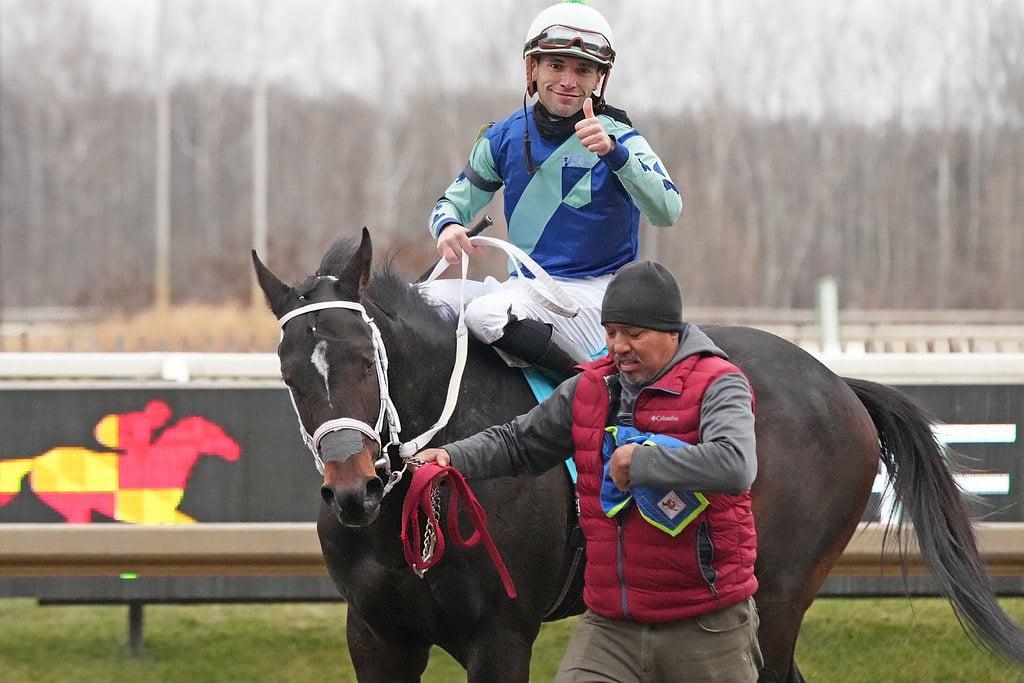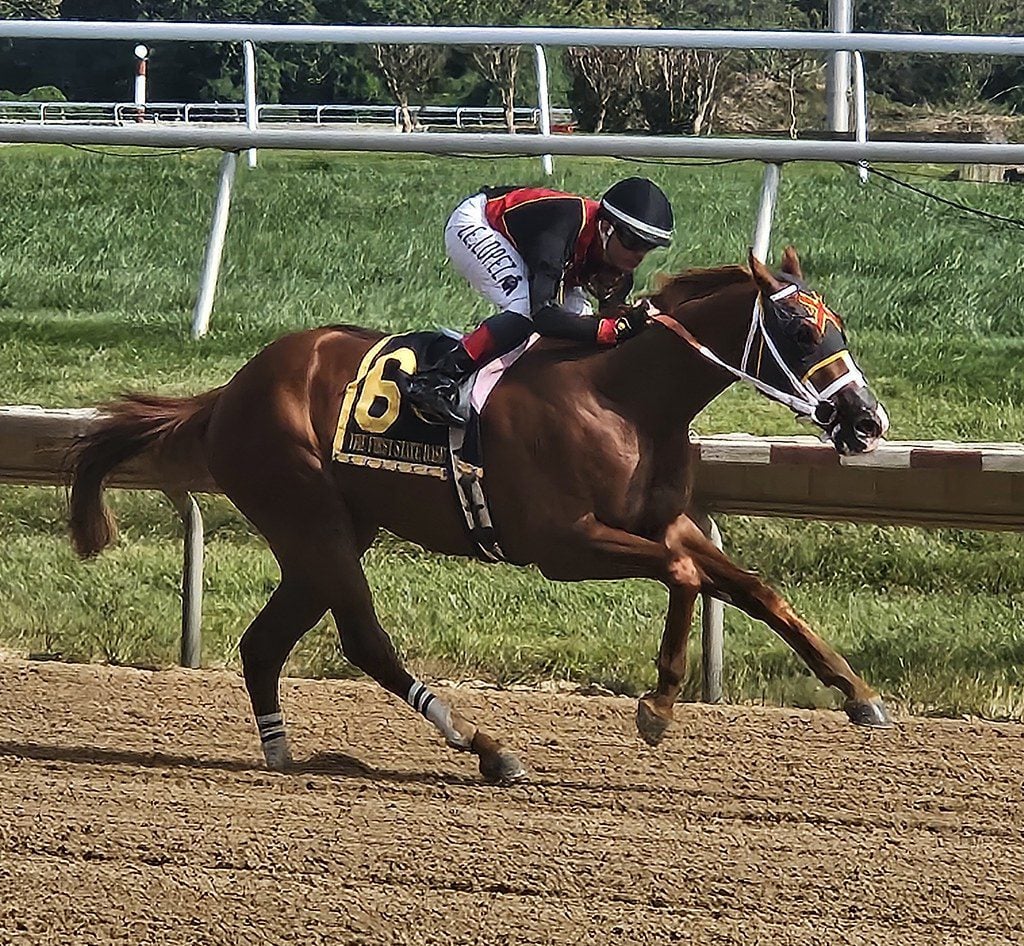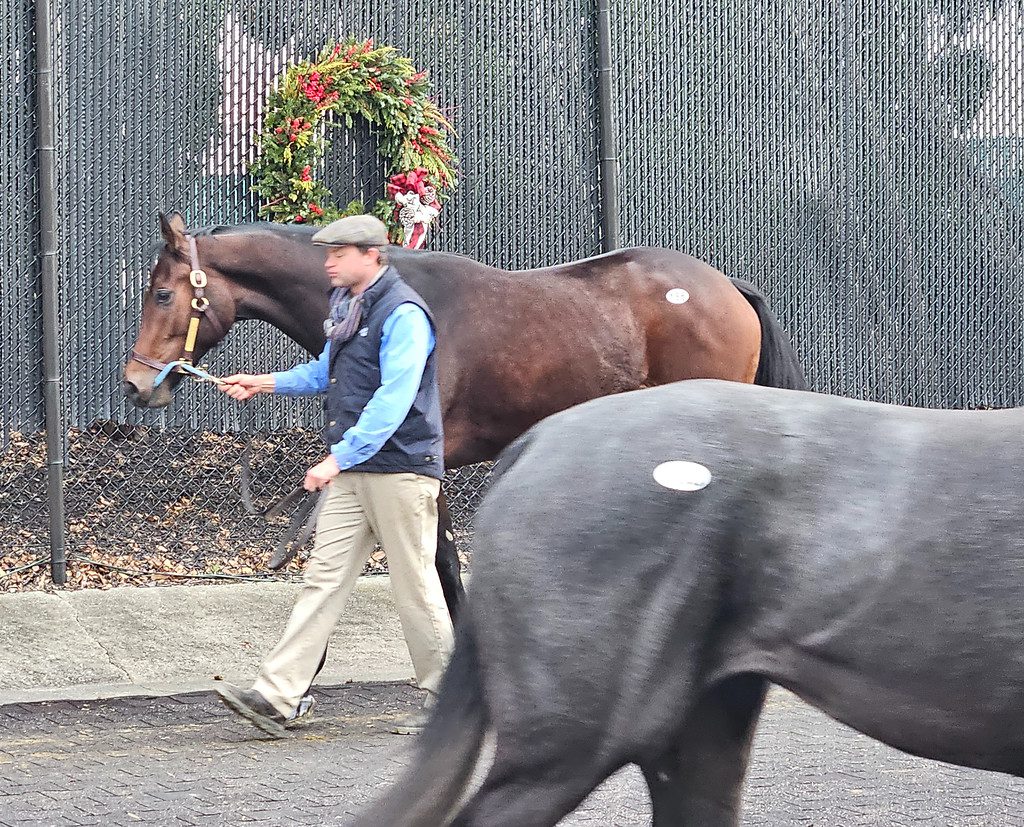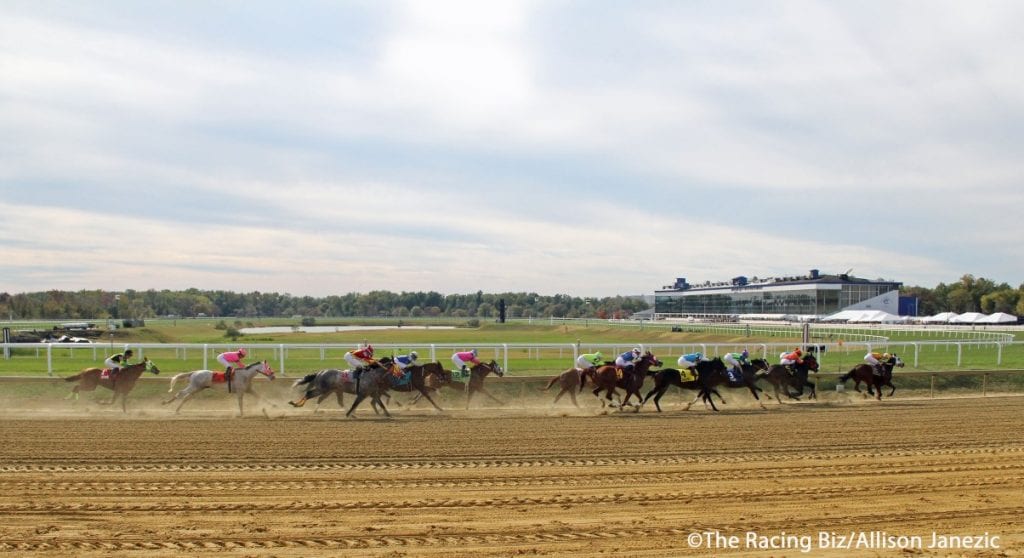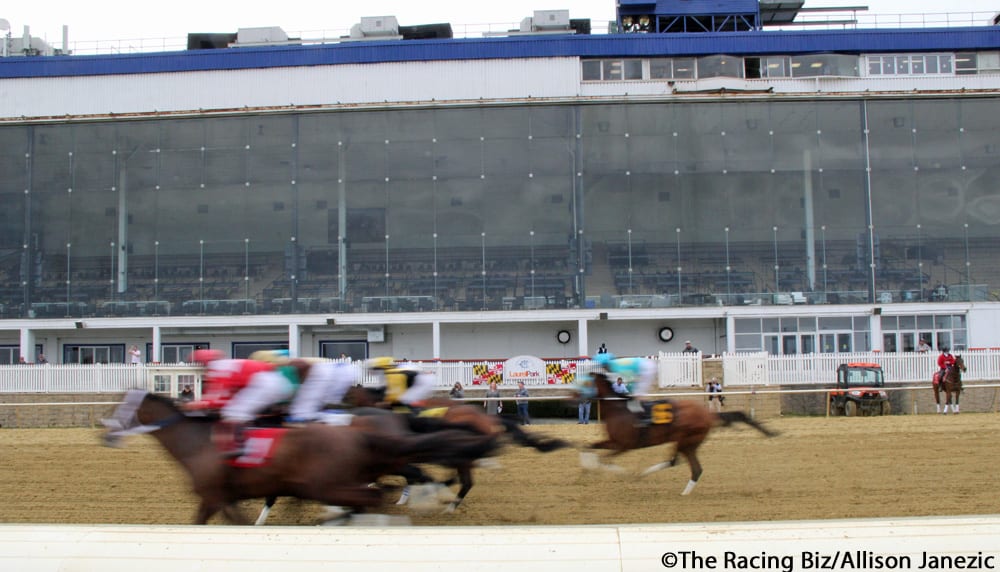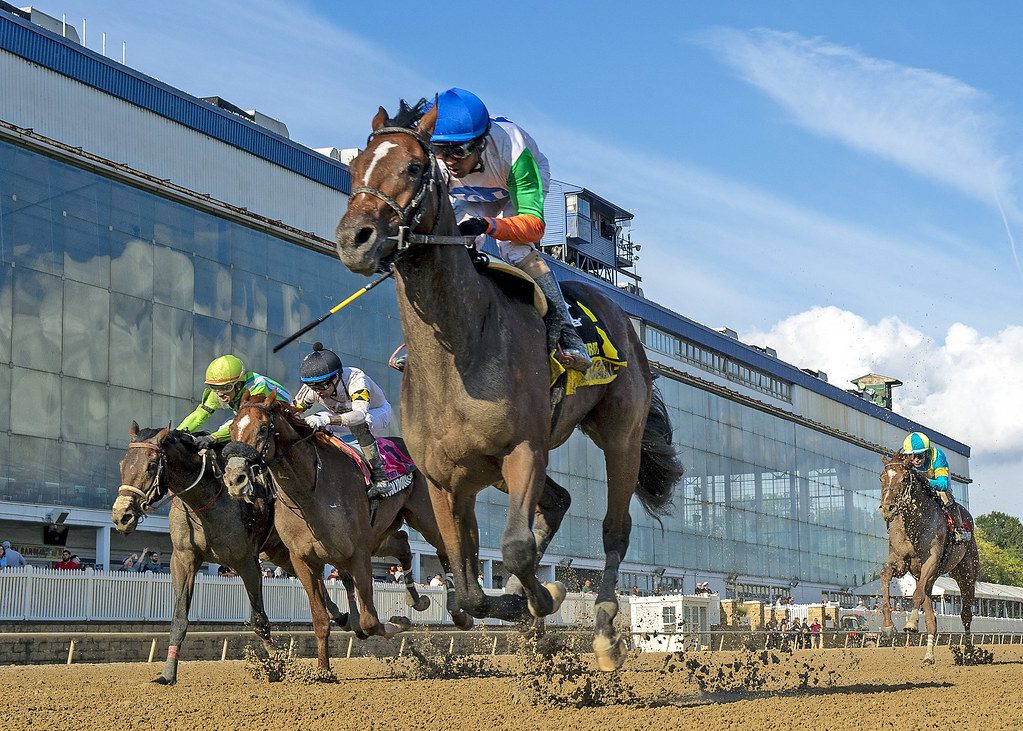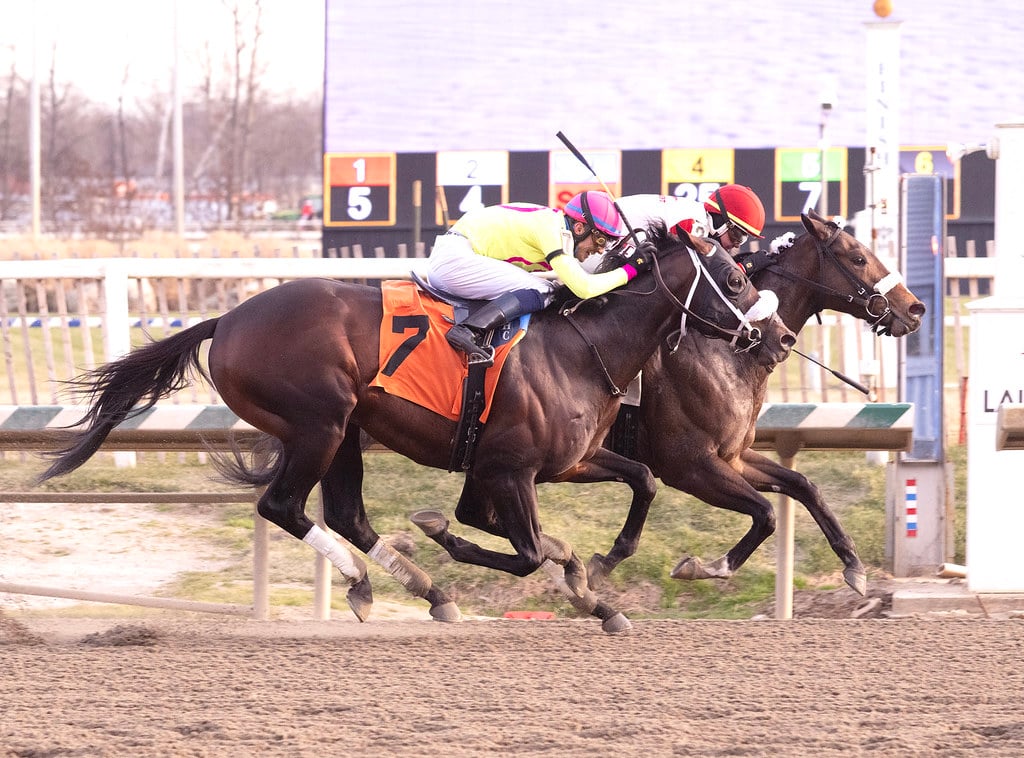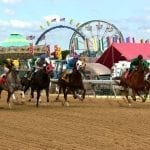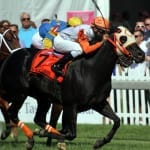by Ted Black
In the August 24 Sylvia Bishop Memorial Stakes at Charles Town, bettors poured more than $406,000 into the win-place-show pools and sent Jax and Jill — the best current West Virginia-bred three year-old filly — off at 1-9.
No other race on that card had even $40,000 in the mutuel pool.
It was at least the third time in recent weeks that bridge jumpers — those patrons who risk six figures to show on a horse looking for an immediate 10 percent profit in West Virginia — had pounded a short-odds fave at the West Virginia bullring. That in itself was unusual. Even odder was this: while every horse’s show payoff in a bridge jumper race in which the favorite finishes in the money traditionally has been $2.20 (or $2.10, in some other jurisdictions), the payoffs in the Bishop reached as high as $3.60.
All of which leads to the question: just what is going on here?
“In many ways, this is one of those odd years in which we have several horses that absolutely stand out in their divisions,” said Charles Town Vice President of Racing Operations Erich Zimny. “We probably haven’t seen anything like this in three or four years.”
In addition to Jax and Jill, state-bred stars Lucy’s Bob Boy and Down Town Allen have attracted the attention of bridge jumpers. The same was true of shipper Game on Dude, who won the G2 Charles Town Classic in April. Yet while some tracks cancel show wagering in such races, Zimny says that Charles Town’s policy is to offer show wagering on any race in which there are at least five betting interests, even if one of them is likely to attract bridge jumpers.
“In races where we have five horses, we… take show wagering. But in races where there are four horses or less we cannot take show wagers,” Zimny continued. “It’s probably not fair to the public that they can show up at the track one night and find out they cannot bet on Lucy’s Bob Boy or Game On Dude to show. If one of those horses doesn’t hit the board, you’ll see some really inflated show payoffs.”
While such wagers lead to what are called minus pools — pools in which the bet taker’s exposure is greater than the amount wagered — the risk to the track is somewhat muted. That’s because very often the actual six-figure wagers – Lucy’s Bob Boy attracted several hundred thousand dollars in show wagers on Classic night – are not made at the track.
Zimny said he could not go into the details of each agreement with simulcast outlets, but noted that often the risk to Charles Town is either minimal or divided with the site that took the wager. On the night of the Bishop, for example, the on-track handle for the entire card was less than $100,000, suggesting that other venues may have been on the hook for a sizable portion of the minus pool.
“I’m not sure about the laws in each jurisdiction, but not every outlet has to offer the same wagering menu that we offer on a given race,” Zimny said. “If a track does not want to offer place or show betting on a race we have here, that’s up to them. In our stakes, if we have five horses then we have to offer show wagering. If the horse wins, then you see a lot of short prices, but occasionally they run out and that blows up the prices.”
With the advent of net pool pricing, bettors have also noticed that the success of a bridge jumper does not necessarily mean than each of the horses that finishes in the top three will return the set minimum. For example, in last weekend’s Bishop, when Jax And Jill attracted over $350,000 in show wagers, the combined show payoffs were $8.60, much higher than the $6.60 minimum.
That’s because net pool pricing entails determining payoffs based on the net amount — subtracting takeout — wagered on each horse in the pool. As a result, there is always some dividend to split among the horses.
By contrast, in standard pool pricing, if the gross amount wagered to show on horses that finished in the money exceeds the show pool net of takeout, there is no dividend; all horses receive the minimum payout.
“I know the end result of net pool pricing is favorable for the betting public,” Zimny said. “It’s not a big difference, but it’s something and the tracks are really at little risk of a serious minus pool. ”
For example, the difference in the payouts in a race where the favorite has attracted $950,000 of $1 million bet in the show pool is actually much lower than might be expected. In the former single pool pricing — where each winning show bet would pay $2.20 — the final amount returned to the betting public is $1.06 million. In the net pool pricing format, the return is $1.075 million, a difference of only $15,000.
And then there’s the circumstance where the short-priced favorite runs up the track and out of the money.
In the example above, if the huge favorite finished out of the money, the combined show payoffs could easily exceed $100. If, for example, the three horses that finished in the money had attracted $16,000, $14,000 and $12,000 in show wagers, they would return $34.40, $39.40, and $45.60 for each $2 show bet — a handsome profit and one attained, in a short field, at little risk.
So in essence, anyone who ventures to the track and notices a race where bridge jumpers are obviously well invested in the show pools may want to make a $2 show wager on each horse. Granted, if the sure thing finishes in the top three, then the payoffs are going to result in a modest loss. But if the favorite fails to hit the board, then you’re likely looking at boxcar payoffs, and one happy trip to the track.
NET POOL PRICING TABLE
The table below demonstrates how net pool pricing benefits bettors. In this case, the three horses finishing in the money have attracted $964,000 out of $1 million in the show pool. Under standard pricing, because they have attracted more than the entire pool net of takeout, all three would receive the minimum allowable return (line 7). Under net pool, however, because there is a “dividend” available (line 5), bettors receive more money. NB: These numbers are illustrative and not precise because they do not account for breakage, the racing industry practice of rounding payoffs down to dime increments.
Featured image, of Game on Dude winning the Charles Town Classic, is by Coady Photography.
Clarification: An earlier posted version of this story suggested that Charles Town is required by state law or regulations to offer show wagers when there are five or more betting interests. That is not the case. We regret the error.


